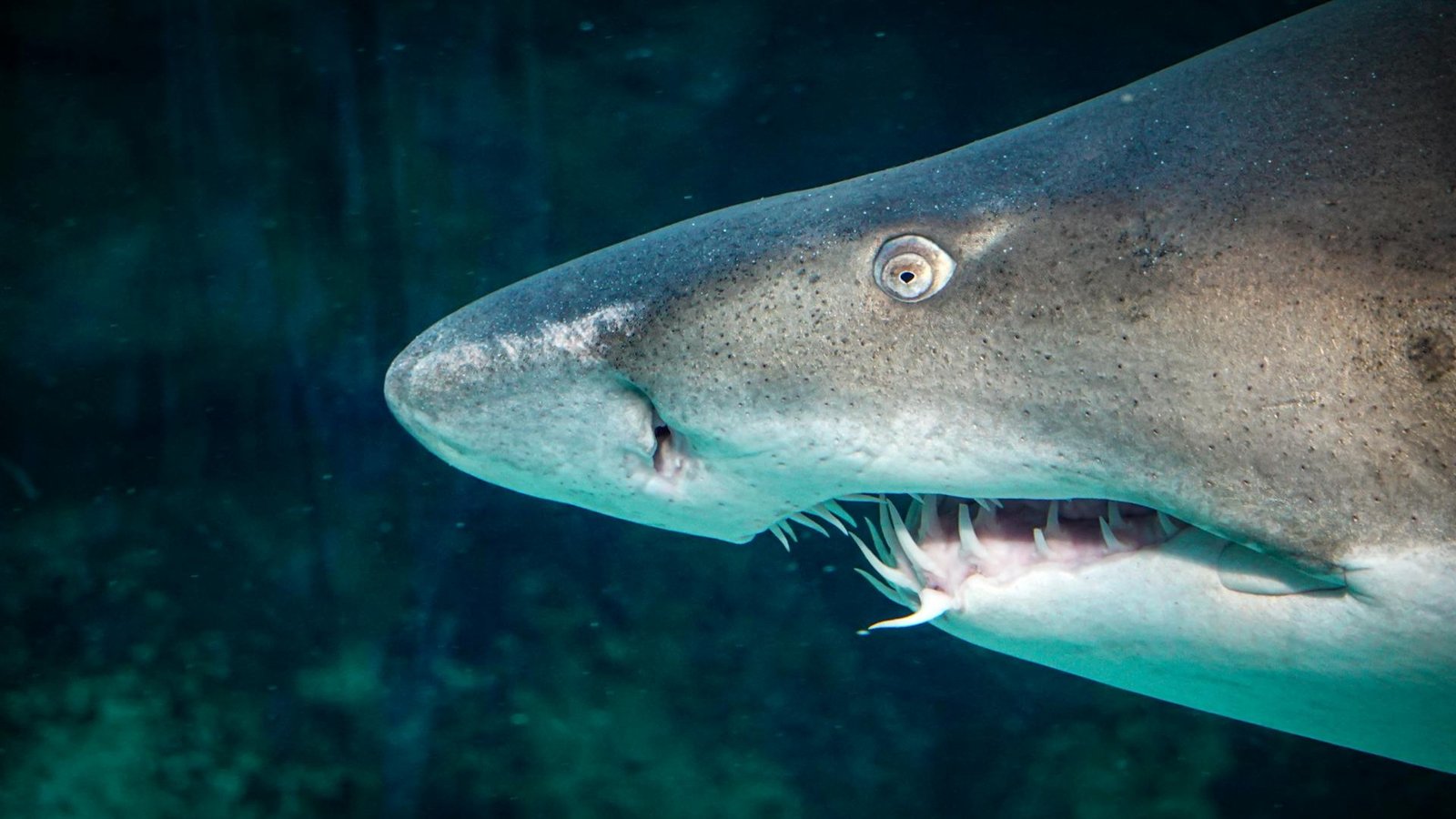Among the many fascinating features of sharks, their teeth stand out as some of the most distinctive and varied in the animal kingdom. From razor-sharp cutters to bizarre spirals, unique shark teeth not only reflect a shark’s diet and hunting style but also offer insight into millions of years of evolution. These dental adaptations have transformed sharks into some of the most efficient predators in the ocean, and understanding these differences can aid in shark tooth identification, fossil research, and conservation efforts.
In this article, we’ll explore seven sharks known for their particularly unusual teeth, examining how these traits evolved and what makes each species stand out in the world of ocean predator teeth.
1. Goblin Shark: Nail-Like Teeth and Protrusible Jaws

The goblin shark is often referred to as a “living fossil” due to its ancient lineage and deep-sea habitat. One of its most remarkable features is its long, flat snout and narrow, nail-like teeth. These teeth are designed not for crushing or slicing, but for grabbing soft-bodied prey, such as squid and deep-sea fish.
What truly sets this species apart is its protrusible jaw. The goblin shark can rapidly thrust its jaws forward to snatch prey, and its teeth are arranged in multiple rows that curve inward to prevent escape. This makes the goblin shark a standout in both behavior and shark tooth structure.
Its teeth are often studied for shark identification purposes, especially in fossil records, where similar structures are used to trace the evolution of deep-sea sharks.
2. Cookiecutter Shark: Circular Sockets for Punching Holes
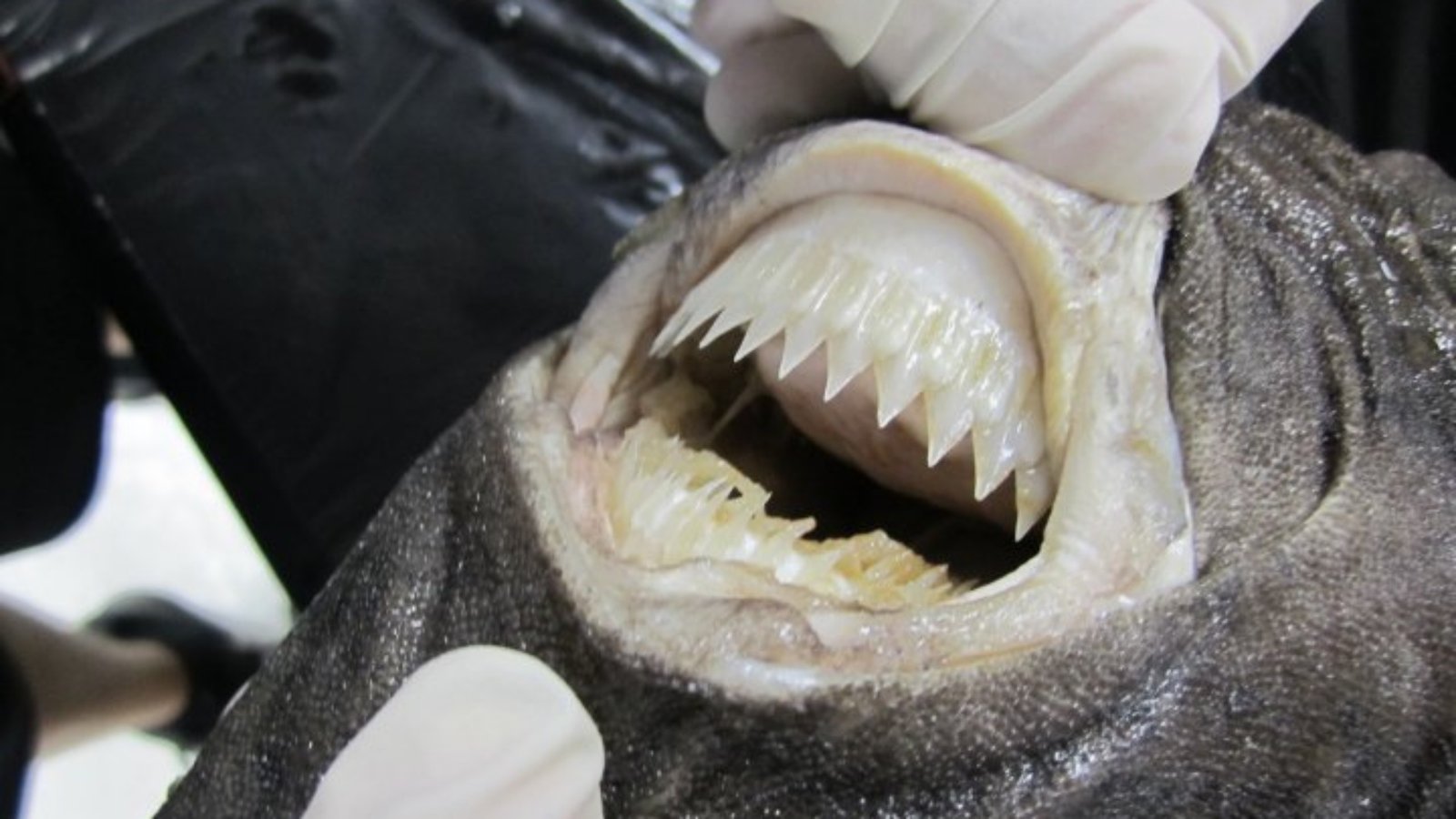
The cookiecutter shark is small in size but makes a huge impression with its bizarre dental design. It uses its uniquely shaped lower teeth to gouge circular chunks of flesh from much larger animals like whales, dolphins, and even submarines. These sharp, triangular teeth are arranged in a tight row and act like a cookie cutter, hence the name.
The upper teeth are smaller and hook-like, used to hold onto prey while the lower jaw rotates to twist out a plug of flesh. This rare feeding strategy makes cookiecutter sharks one of the most unusual shark species and a perfect example of how specialized shark tooth evolution can be.
The teeth of this species are highly prized among collectors of rare shark teeth, given their distinctive shape and unique function.
3. Frilled Shark: Trident-Like Teeth for Grabbing Slippery Prey

The frilled shark is another deep-sea oddity with teeth that seem straight out of science fiction. Each tooth has three needle-like cusps, giving them a trident appearance. This arrangement is ideal for catching slippery prey like squid, which are pulled backward into the throat by the backward-facing teeth.
This shark’s mouth contains over 300 of these strange teeth, set in 25 rows. The wide gape and eel-like body allow the frilled shark to lunge forward and trap prey in an almost snake-like manner. These traits place it high on the list of sharks with unique teeth and offer a fascinating window into comparisons of fossil shark teeth.
Due to their rarity, frilled shark teeth are also studied as part of efforts in deep-sea shark teeth identification.
4. Megalodon: The Largest Shark Teeth in History

No list about unique shark teeth would be complete without mentioning the legendary megalodon. Although extinct, the megalodon is famous for having the largest shark teeth ever discovered, some measuring over 7 inches long. These massive, serrated teeth were used for slicing through bone and large prey, such as whales.
Fossil shark teeth from megalodons have been found worldwide, often in excellent condition due to the durability of their composition. These teeth provide critical evidence of ancient marine ecosystems and the evolution of shark tooth structure over time.
Megalodon teeth remain some of the most collectible and rare shark teeth, continuing to capture the public imagination and scientific interest alike.
5. Hammerhead Shark: Multi-Rowed Serrated Teeth
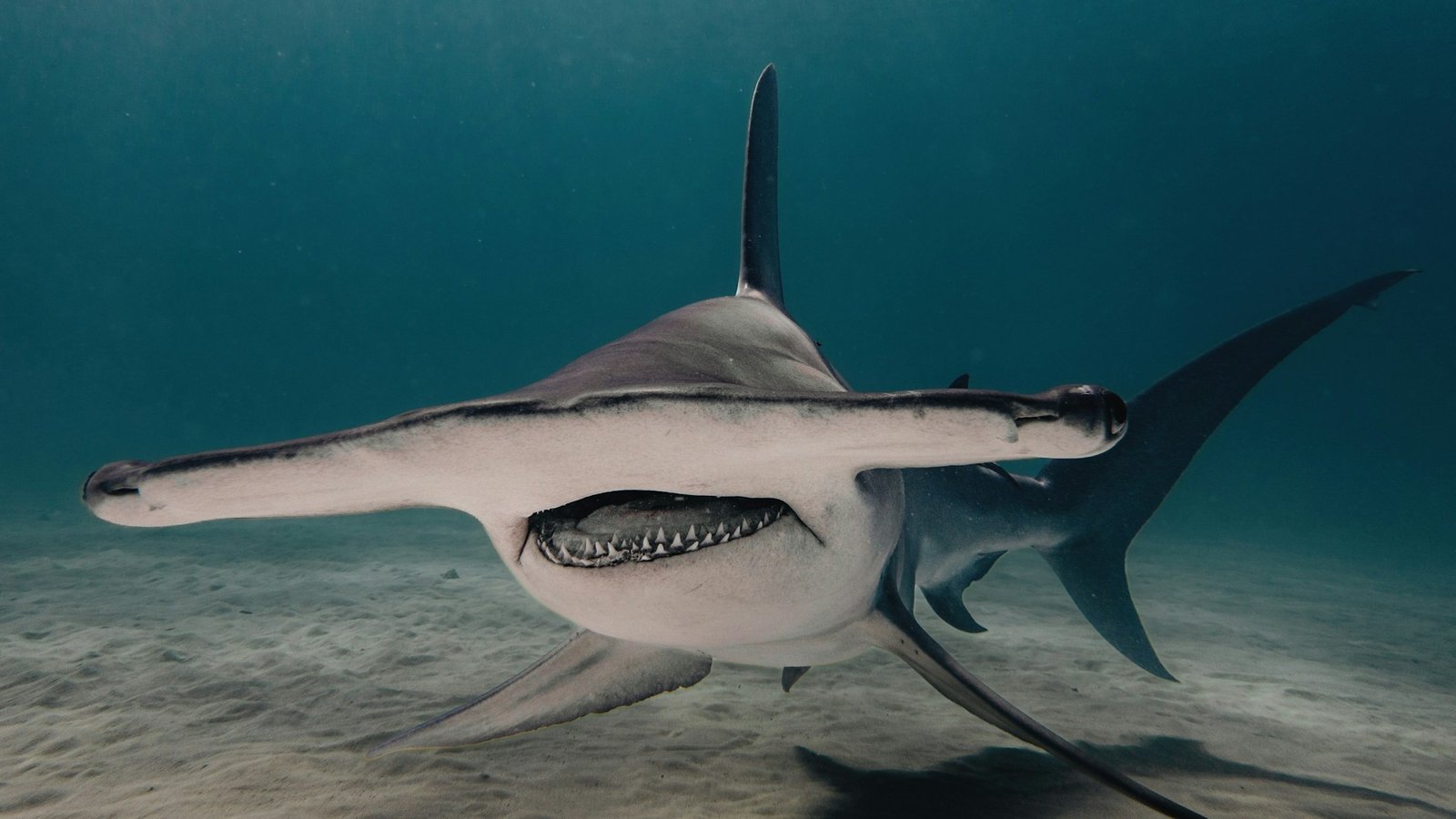
Hammerhead sharks are renowned for their distinctive, wide, flat heads, but their teeth are equally fascinating. These sharks have multiple rows of small, serrated teeth that are perfect for tearing into fish, rays, and other soft-bodied prey. The wide jaw and strong bite allow hammerheads to pin down and dismember prey effectively.
Though not as visually bizarre as others on this list, hammerhead teeth play a key role in shark tooth evolution. Their serrated edges provide efficient cutting power, and the multiple rows ensure that lost teeth are quickly replaced.
Their teeth are commonly found in fossil shark tooth collections and are essential for understanding the types of shark teeth in modern species.
6. Sawshark: Saw-Like Rostrum Lined With Teeth
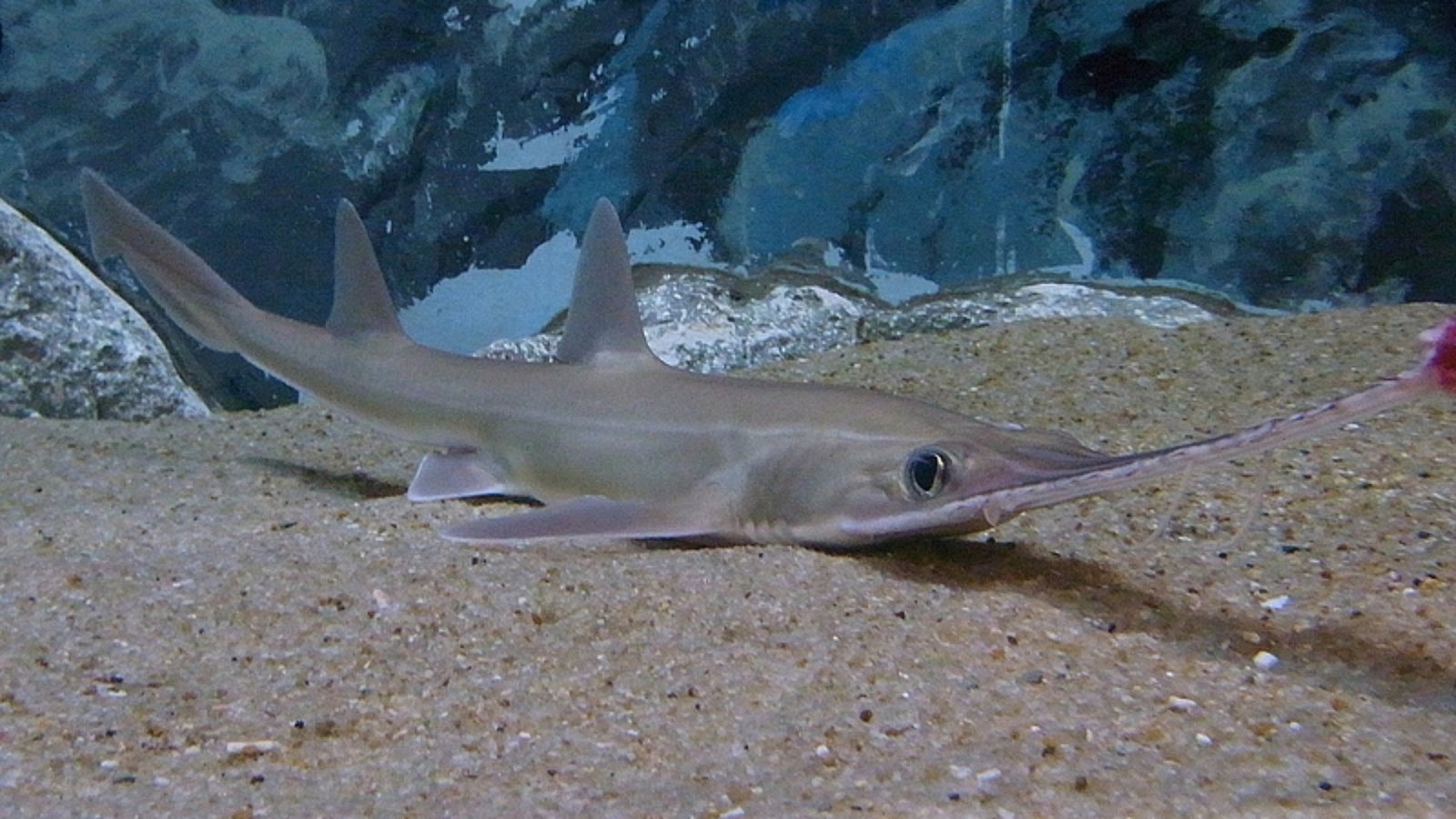
The sawshark is perhaps one of the strangest-looking species in the ocean. Its long snout, or rostrum, is lined with sharp teeth on either side, resembling a chainsaw. These teeth are not used for chewing but for slashing through schools of fish or stirring up crustaceans buried in the sand.
These rostral teeth differ from oral teeth, but they are still an important part of the shark’s tooth structure. They grow in specific patterns and are periodically replaced as they wear down.
Although not as well-known as other species, the sawshark’s tooth-lined snout is a defining trait among the most unusual shark species and a key focus in shark teeth research.
7. Helicoprion: Spiral Whorl of Teeth
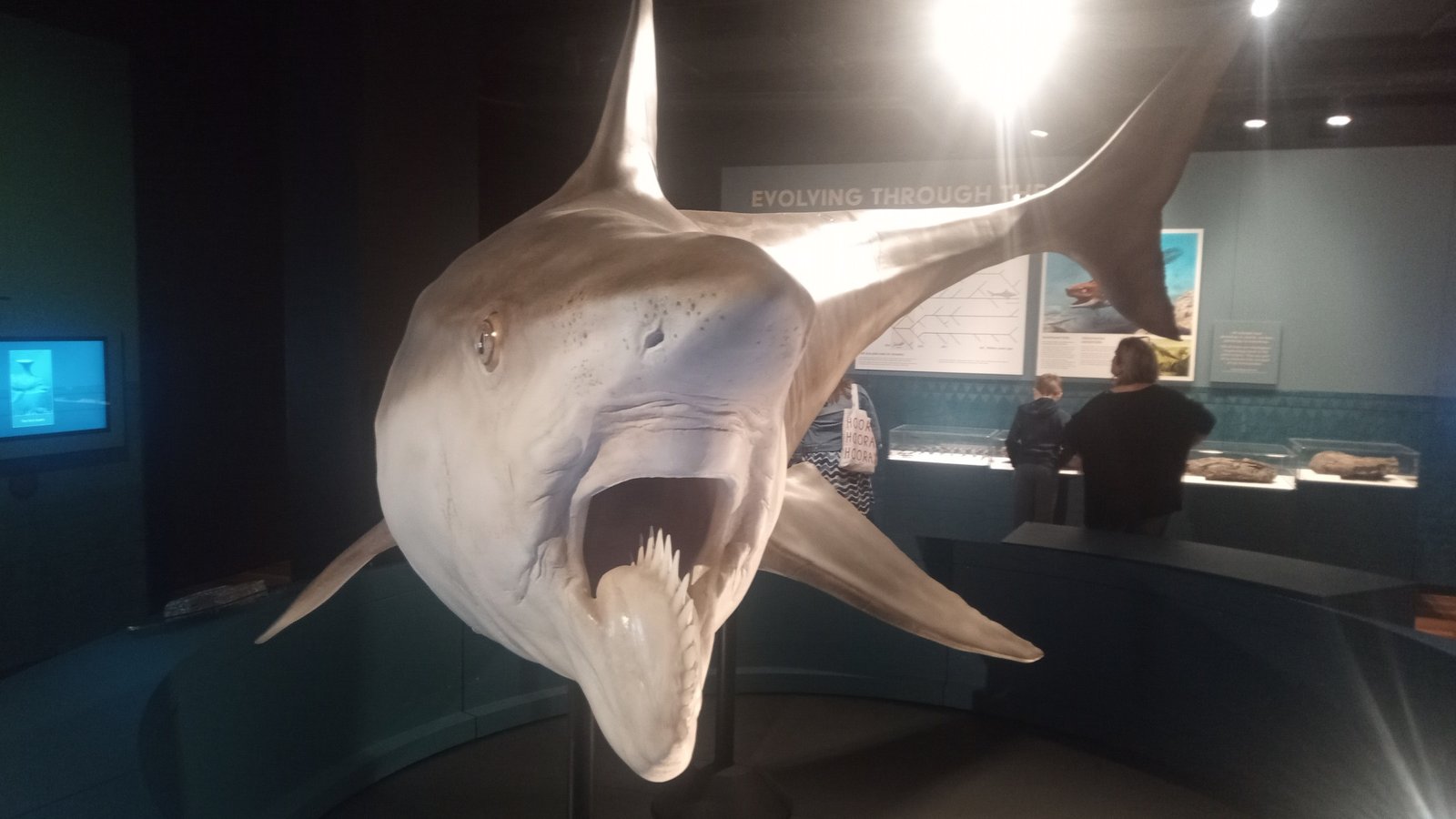
Perhaps the most bizarre entry on this list, the extinct Helicoprion shark had a spiral-shaped whorl of teeth resembling a circular saw. This spiral, located in the lower jaw, could have been used to slice soft-bodied prey or pull it into the throat. The exact function is still debated, but CT scans of fossils have provided more insight into this mysterious predator.
These spiral tooth arrangements are unmatched in the animal kingdom and represent one of the most dramatic examples of shark tooth evolution. No modern species has anything comparable, making Helicoprion one of the most iconic fossil shark tooth finds.
Due to their rarity and unique formation, Helicoprion teeth are a highlight in paleontological collections of rare shark teeth.
The Diversity of Shark Tooth Structure and Function

The wide range of shark tooth types reflects the incredible adaptability of sharks to various environments and prey. From cutters and grinders to graspers and slashers, each tooth tells a story of evolution, survival, and specialization.
Modern sharks, as well as their extinct ancestors, continue to provide insight into the relationship between form and function in the natural world. Studying shark teeth facts and fossils helps researchers understand how different species evolved and how they fit into ancient marine ecosystems.
This diversity is not just fascinating but also useful for identifying species from tooth remains, making shark teeth identification a key tool in both modern science and fossil analysis.
Final Thoughts
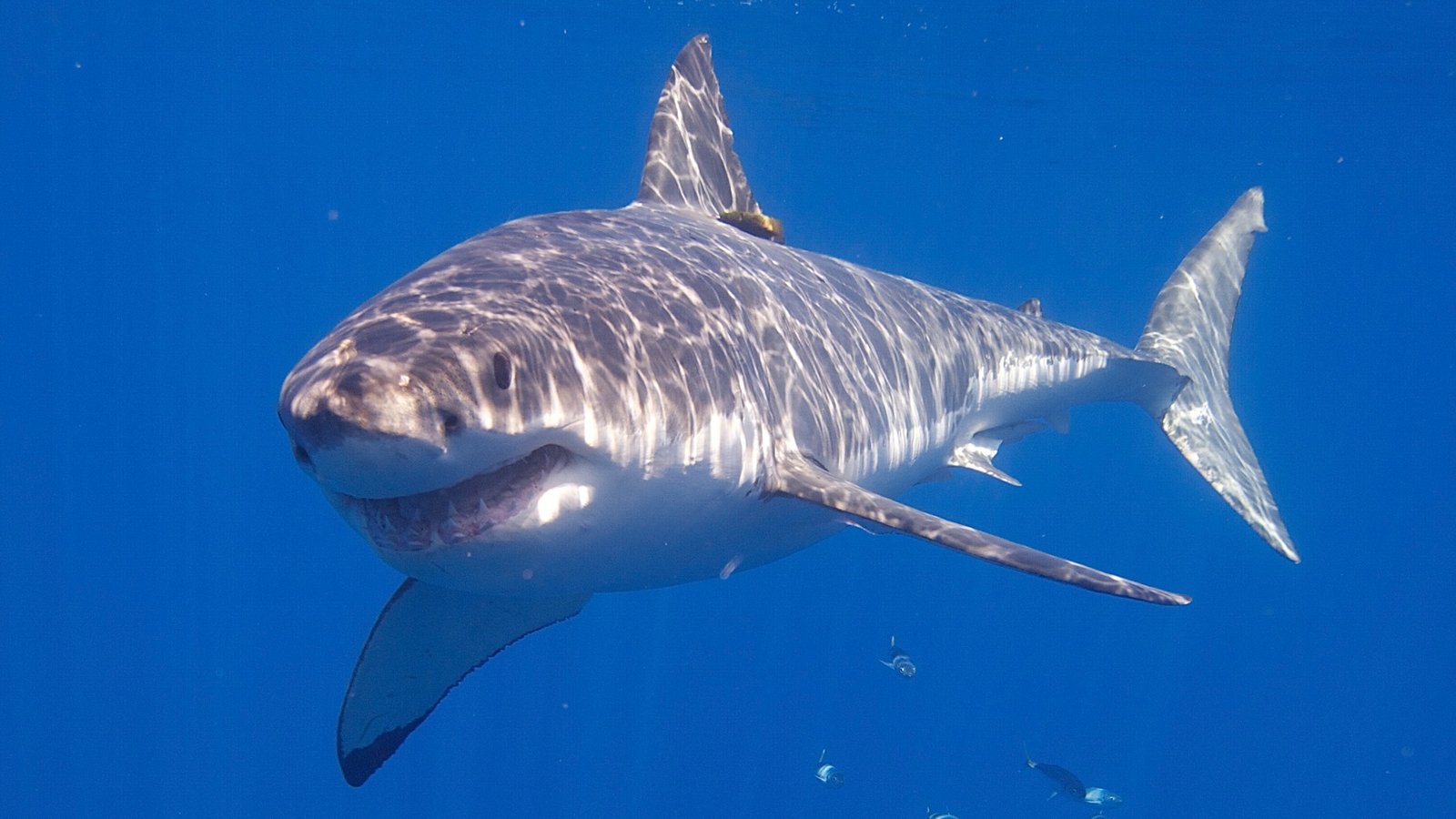
From spiraled saws to serrated slicers, unique shark teeth reveal just how diverse and specialized these ocean predators have become over millions of years. Whether you’re studying fossil shark teeth, examining the jaws of living species, or learning about shark tooth structure, the variety is nothing short of extraordinary.
Each tooth type serves a specific purpose, reflecting the shark’s habitat, diet, and hunting method. These adaptations not only highlight evolutionary innovation but also emphasize the importance of sharks in ocean ecosystems. To learn more about sharks and their remarkable adaptations, keep exploring the fascinating world of marine science.

